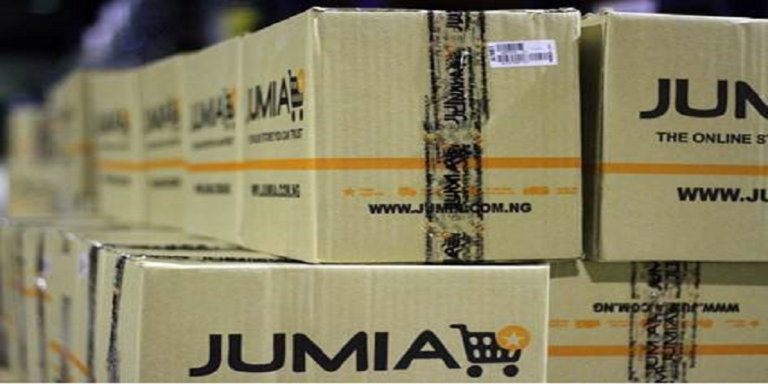
Jumia lost 20% of its value yesterday as the company reported a lower than expected revenue for Q3 2020: “GMV (gross merchandise volume) was €187.3 million, down 28% year-over-year.” The company’s total Q3 revenue fell almost 18% year over year. Over the last few weeks, investors have parked on Jumia, expecting a rocketship-like quarter. That did not happen. I had captured the sentiment when I wrote that “Jumia has a big appointment: Nov 10”.
- Gross profit increased by 22% year-over-year
- Operating loss decreased by 49% year-over-year
- JumiaPay Total Payment Volume increased by 50% year-over-year
Yet, things are not necessarily bad when you look deep into the data. Jumia has evolved beyond first-party products (products which Jumia sells directly to end customers) and that means expecting it to ramp up revenue is wrong. Jumia is moving into becoming a hub where third-parties come and do business. That explains why it opened its logistics arm to 3rd-party ecommerce companies. The implication is this: 3rd party players typically record lower revenue unlike first-party players. However, they typically have better margins: Jumia’s Q3 gross profit increased by 22% year-over-year. If Jumia sustains this model, its revenue may drop but its profit may improve when benchmarked on assets. Jumia is doing everything to find profitability. The data reported is consistent with my expectation in that space.
I hope it delivers because Jumia has added a GREAT mission on its double play strategy: open the logistics infrastructure to 3rd party players: “Put together, Jumia’s logistics arm has been exclusively available to vendors on its marketplace—until now. The company is opening up its logistics services to third party users across 11 countries in Africa”. The implication is huge: Jumia wants to carry other ecommerce companies on its back, for profit, of course. Do not take that playbook for granted because if the friction of logistics is eliminated, for some small ecommerce operators, they will scale.
The most important thing for Jumia is winning demand, and the company is doing that by launching gaming to ensure that users come and stay. As I have noted, modern digital empires can only win by controlling demand and not just supply; Jumia is executing on that. With all those elements, it pushed annual active customers up by 23% year over year, to 6.7 million customers.
Register for Tekedia Mini-MBA edition 19 (Feb 9 – May 2, 2026): big discounts for early bird.
Tekedia AI in Business Masterclass opens registrations.
Join Tekedia Capital Syndicate and co-invest in great global startups.
Register for Tekedia AI Lab: From Technical Design to Deployment (next edition begins Jan 24 2026).
And the biggest one: JumiaPay was up by 50% from the third quarter of 2019.
- JumiaPay TPV was €48.0 million, a year-over-year increase of 50%, more than doubling on-platform TPV penetration from 12.2% of GMV in the third quarter of 2019 to 25.6% of GMV in the third quarter of 2020.
Yet, Jumia’s biggest problem is not strategy. I think it has come home with a solid double play strategy. The problem is that its customer base needs to grow wealthier to begin to value its services. Only that transition will move many from the open market to the ecommerce market.
Jumia did not have a bad Q3 party but with Covid-19 lockdown over, the next quarter becomes even more important to avoid another gyration in Wall Street. Many are asking for patience, including its previous arch-enemy who is now a believer. Typically, the problem is not whether ecommerce will work in the future; the issue is this – how long would you be funding losses before it works in Africa! That is NOT a same day delivery problem!
Comment on LinkedIn Feed
Comment: Prof, do you think the third party playing strategy on the logistics arm of the business will really have a significant growth effect on Jumia’s earnings?
The reason why I asked is because, this particular third party play isn’t really like others, where there’s little to no cost required, both to manage or to scale; this is logistics, and I think opening up the logistics arm won’t really take care the usual operational costs that the arm incur.
In fact, I think the Opex along that line might even increase, since there might be more financing that will need to go into delivery trucks maintenance, more frequent gasoline refilling, and possibly, purchase of more trucks and recruitment of more delivery truck drivers – all thanks to the new workload. What do you think?
My Response: The biggest friction in ecommerce today in Africa is LOGISTICS. It is based on that that I noted that ecommerce in Africa is a physical business since the marginal cost is mainly offline. Marginal cost is distribution & transaction cost with the distribution cost mainly the logistics. If Jumia solves that at scale, it becomes the post office of Nigeria’s ecommerce. And if does that, it can bring everyone into its ecosystem and imposes its tax. Logistics has more opportunities than ecommerce in Nigeria right now since most of the cost is distribution related.
So, there is nothing that stops Jumia solving that problem. Expect most FMCGs bundling into Jumia if they see an efficient logistics. Of course, as you noted, I do not think Jumia has the resources to do it. I had expected Amazon which can come and drop $4 billion and become the “national” platform. Of course, some will say why Amazon when there are many people in my village which can do it!
---
Connect via my
LinkedIn |
Facebook |
X |
TikTok |
Instagram |
YouTube




The ecommerce code is yet to be cracked here, but that’s also dependent on purchasing power in the land; for now it’s abysmal.